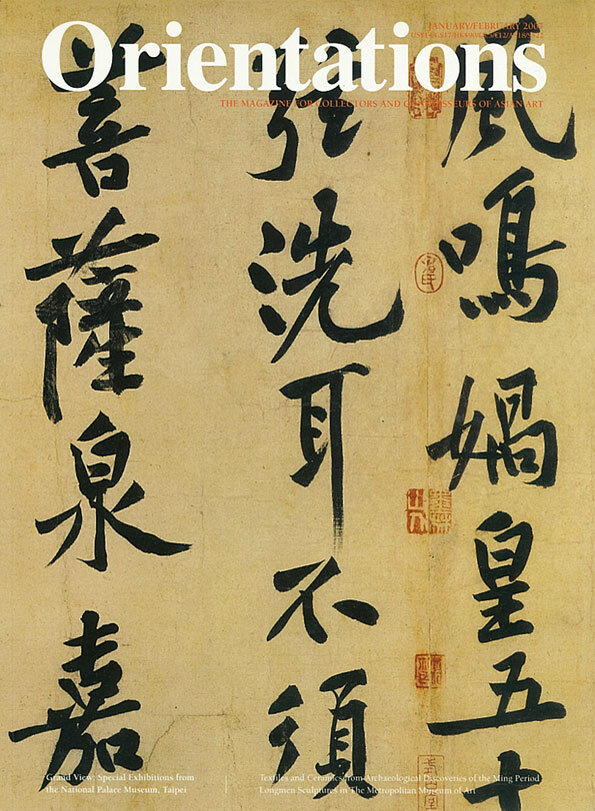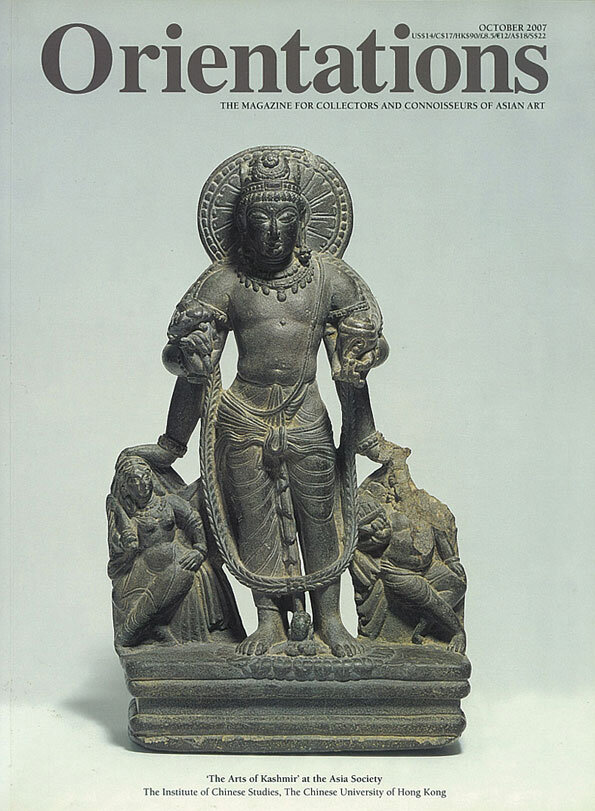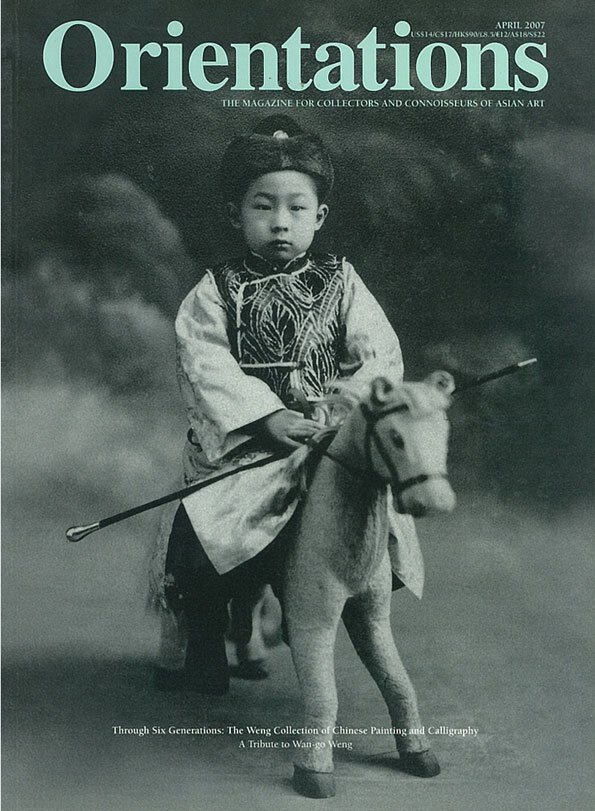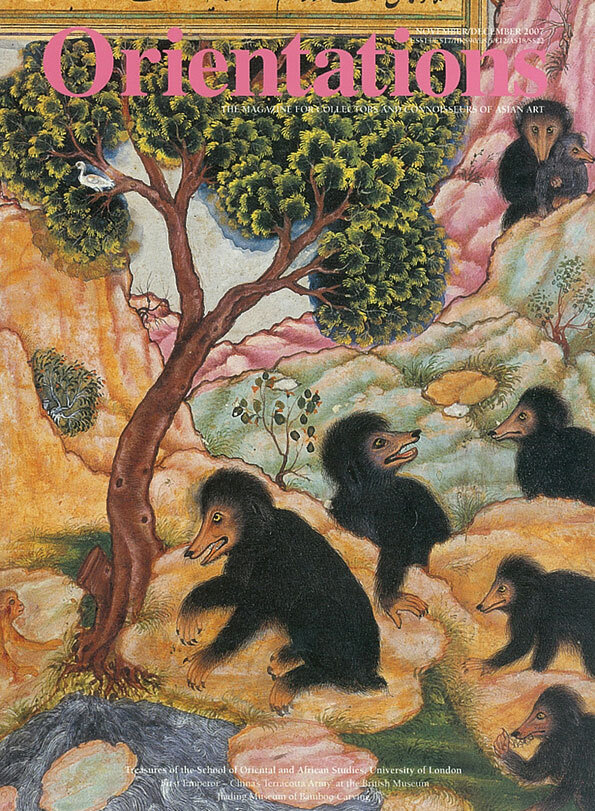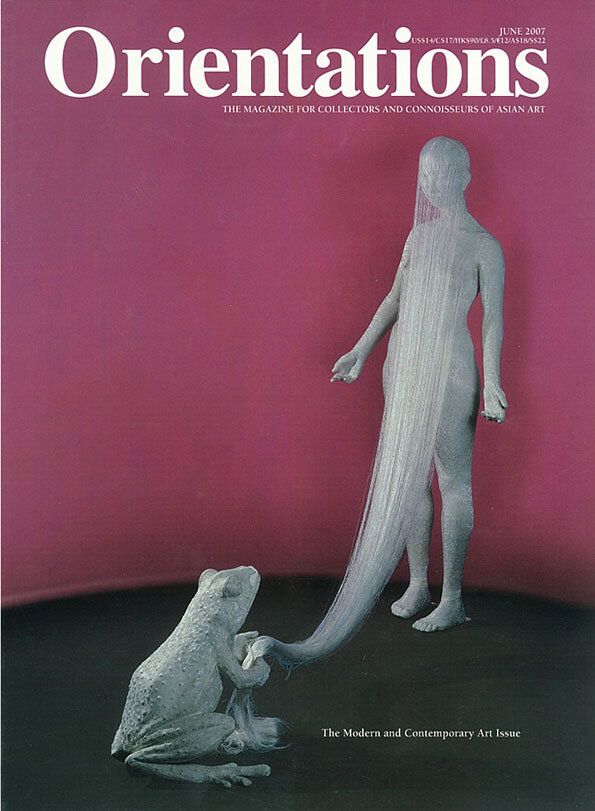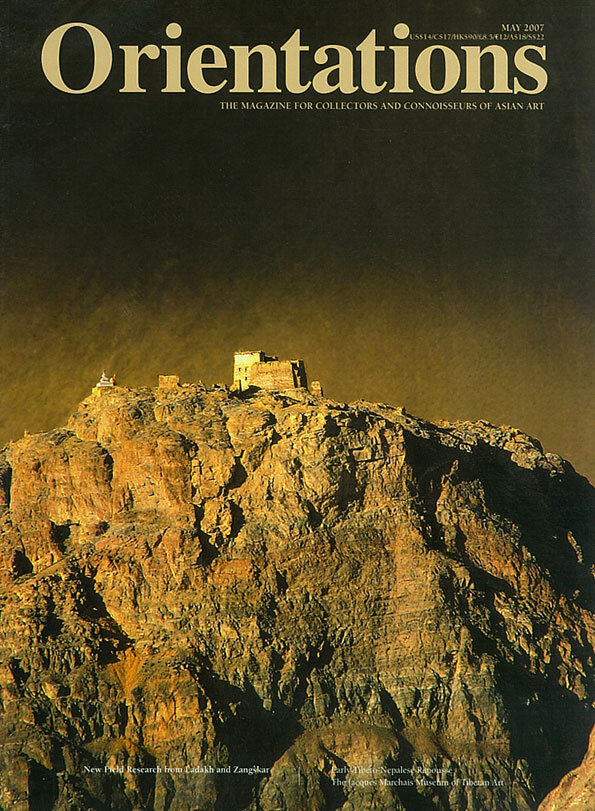 Image 1 of 1
Image 1 of 1


MAY 2007
VOLUME 38 - NUMBER 4
The main features in this issue reflect the dynamism and pioneering spirit that characterize the study of Tibetan Buddhism and its art today. In the course of their fieldwork in Ladakh and Zangskar, Rob Linrothe, Melissa Kerin and Gerald Kozicz discovered murals that will contribute to a fuller understanding of the area's history, its workship practices, iconography and painting styles, and the establishment of a dating framework for artworks created during the so-called 'Second Diffusion' of Buddhism. Their differing interpretations do not suggest dispute but are indicative of the burgeoning discourse in an area of research still in its infancy. As demonstrated by Linrothe's study of the depictions of Indian yogis in early Drigung painting and Yashaswini Chandra's identification of Green Tara at Alchi, the application of historical context and the examination of texts can bring new readings to seemingly known motifs and works.
John Clarke's study of three repoussé pieces shed light on works made by Newari artists for Tibetan patrons in the 14th and 15th centuries. Sarah Johnson relates the remarkable story of Jacques Marchais, an American collector who established a museum of Tibetan art on Staten Island. The students of Father Harrie Vanderstappen pay tribute to a life dedicated to academia and the church.
There are also previews of Asian art fairs in Hong Kong, Paris, Brussels and London. Owen Morgan's commentary on graffiti and copyright allows us to re-examine our perceived notions of 'art'.
FEATURES
Tributes to Father Harrie Vanderstappen
Nancy Berliner. A Moment in History Re-Emerges in Full Colour and Detail: Yuanxi Kaiyan by Zhang Tingyuan and Zhou Kun
Sarah Johnson. From Staten Island to Shangri-La: The Collecting Life of Jacques Marchais
John Clarke. 'New' Early Works of Tibeto-Nepalese Repousse
Yashaswini Chandra. A Form of Tara Peculiar to Alchi
Rob Linrothe. Strengthening the Roots: An Indian Yogi in Early Drigung Paintings of Ladakh and Zangskar
Gerald Kozicz. Documenting the Last Surviving Murals of Nyarma
Melissa R. Kerin. Faded Remains: Little-Known 12th Century Wall Paintings in Ladakh's Markha Valley
Rob Linrothe. A Winter in the Field
PREVIEWS & REVIEWS
Erberto F. Lo Bue. Book Review: Andre Alexander, with a contribution by Matthew Akester: The Temples of Lhasa: Tibetan Buddhist Architecture from the 7th to the 21st Centuries, Serindia Publications, Chicago, 2005
INTERVIEWS
Robert Poor. Obituary: Harrie A. Vanderstappen (1921-2007)
INTERVIEWS
Owen Morgan. Commentary: Graffiti Art and Copyright
VOLUME 38 - NUMBER 4
The main features in this issue reflect the dynamism and pioneering spirit that characterize the study of Tibetan Buddhism and its art today. In the course of their fieldwork in Ladakh and Zangskar, Rob Linrothe, Melissa Kerin and Gerald Kozicz discovered murals that will contribute to a fuller understanding of the area's history, its workship practices, iconography and painting styles, and the establishment of a dating framework for artworks created during the so-called 'Second Diffusion' of Buddhism. Their differing interpretations do not suggest dispute but are indicative of the burgeoning discourse in an area of research still in its infancy. As demonstrated by Linrothe's study of the depictions of Indian yogis in early Drigung painting and Yashaswini Chandra's identification of Green Tara at Alchi, the application of historical context and the examination of texts can bring new readings to seemingly known motifs and works.
John Clarke's study of three repoussé pieces shed light on works made by Newari artists for Tibetan patrons in the 14th and 15th centuries. Sarah Johnson relates the remarkable story of Jacques Marchais, an American collector who established a museum of Tibetan art on Staten Island. The students of Father Harrie Vanderstappen pay tribute to a life dedicated to academia and the church.
There are also previews of Asian art fairs in Hong Kong, Paris, Brussels and London. Owen Morgan's commentary on graffiti and copyright allows us to re-examine our perceived notions of 'art'.
FEATURES
Tributes to Father Harrie Vanderstappen
Nancy Berliner. A Moment in History Re-Emerges in Full Colour and Detail: Yuanxi Kaiyan by Zhang Tingyuan and Zhou Kun
Sarah Johnson. From Staten Island to Shangri-La: The Collecting Life of Jacques Marchais
John Clarke. 'New' Early Works of Tibeto-Nepalese Repousse
Yashaswini Chandra. A Form of Tara Peculiar to Alchi
Rob Linrothe. Strengthening the Roots: An Indian Yogi in Early Drigung Paintings of Ladakh and Zangskar
Gerald Kozicz. Documenting the Last Surviving Murals of Nyarma
Melissa R. Kerin. Faded Remains: Little-Known 12th Century Wall Paintings in Ladakh's Markha Valley
Rob Linrothe. A Winter in the Field
PREVIEWS & REVIEWS
Erberto F. Lo Bue. Book Review: Andre Alexander, with a contribution by Matthew Akester: The Temples of Lhasa: Tibetan Buddhist Architecture from the 7th to the 21st Centuries, Serindia Publications, Chicago, 2005
INTERVIEWS
Robert Poor. Obituary: Harrie A. Vanderstappen (1921-2007)
INTERVIEWS
Owen Morgan. Commentary: Graffiti Art and Copyright

